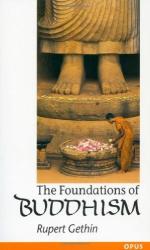
|
| Name: _________________________ | Period: ___________________ |
This test consists of 15 multiple choice questions and 5 short answer questions.
Multiple Choice Questions
1. The classifying and sorting of experiences is called _____.
(a) Placement.
(b) Decision-making.
(c) Recognition.
(d) Skill.
2. An awareness of ourselves as thinking subjects is called _____.
(a) Regret.
(b) Self-loathing.
(c) Self-conscousness.
(d) Karma.
3. One of the four elements in Buddhism is _____.
(a) Space.
(b) Soma.
(c) Fire.
(d) Clouds.
4. The great theme of the Perfection of Wisdom is _____.
(a) Emptiness.
(b) Gladness.
(c) Striving.
(d) Leaving.
5. One of the five hindrances is _____.
(a) Thirst.
(b) Sleep.
(c) Satiation.
(d) Sleepiness.
6. In the Mahayana tradition, sutras set out the stages of the _____.
(a) Planes of dharma.
(b) Levels of consciousness.
(c) Bodhisattva path.
(d) Karmic wheel.
7. Who is the father of the Madhyamaka or middle school?
(a) Abhidharma.
(b) Asoka.
(c) Nagarjuna.
(d) Gautama.
8. The condition of duhkha implies _____ existence.
(a) Coercive.
(b) Unreliable.
(c) Monastic.
(d) Collective.
9. Flowers, incense, and lamps are _____ in modern Buddhism.
(a) Discards.
(b) Bribes.
(c) Offerings.
(d) Distractions.
10. To the early Upanisads, the ultimate self is identified with the underlying ground of all reality known as _____.
(a) Sutta.
(b) Brahman.
(c) Karma.
(d) Dharma.
11. How long have people been wandering through samsara?
(a) Seconds.
(b) Centuries.
(c) Eons.
(d) Millenia.
12. Abhidharma captures the very essence of dharma, which means that its sound can almost operate as a _____.
(a) Smell.
(b) Spell.
(c) Vision.
(d) Warning.
13. One of the four elements in Buddhism is _____.
(a) Earth.
(b) Time.
(c) Wood.
(d) Sand.
14. To whom did the Buddha teach dharma after he performed the miracle after his awakening?
(a) His sister.
(b) His father.
(c) His mother.
(d) His brother.
15. The Mahayana Lankavatara Sutra explicitly argues against _____.
(a) Watching children.
(b) Running after ghosts.
(c) Holding fire ceremonies.
(d) Meat eating.
Short Answer Questions
1. One of the five hindrances is _____.
2. When he ascended to heaven after performing the miracle, under which tree did he sit to do his teaching?
3. Earlier texts state that the universe as a whole comprises a vast number of _____.
4. Nagas are mythical _____.
5. The Milindapanha records the meeting of a Buddhist monk and the local _____ king, Milinda or Menander.
|
This section contains 319 words (approx. 2 pages at 300 words per page) |

|




